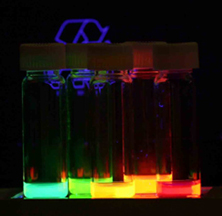Innovative Quantum Navigation Device Utilizes Atoms for 3D Acceleration Measurement

In a groundbreaking study, physicists at the University of Colorado Boulder have developed a novel quantum navigation device capable of measuring acceleration in three dimensions using a cloud of rubidium atoms cooled to near absolute zero. This device, described as a unique atom interferometer, represents a significant advancement in navigation technology, potentially transforming how vehicles such as submarines, spacecraft, and cars determine their motion.
The research team, led by Professor Murray Holland, a physicist and fellow at JILA—a joint research institute between CU Boulder and the National Institute of Standards and Technology (NIST)—published their findings in the peer-reviewed journal Science Advances on June 11, 2025. Holland emphasized the importance of tracking acceleration in all three dimensions for accurate navigation, stating, "To know where I'm going, and to know where I've been, I need to track my acceleration in all three dimensions."
Traditionally, navigation systems have relied on GPS and classical electronic accelerometers, which are limited by environmental wear and tear. Holland’s team aims to overcome these limitations using quantum technology. As graduate student Kendall Mehling explained, "If you leave a classical sensor out in different environments for years, it will age and decay. Atoms don’t age."
The device operates by employing six lasers, each thinner than a human hair, to manipulate a cloud of tens of thousands of rubidium atoms. By utilizing artificial intelligence to control these lasers, the researchers can monitor how the atoms respond to slight accelerations—akin to pressing the gas pedal of a car. This innovative method allows for the simultaneous measurement of acceleration across multiple axes, a feat not previously achievable with conventional atom interferometers.
Historically, interferometers have been crucial in various scientific endeavors, from measuring gravitational waves to enhancing optical communication technologies. The current experiment builds on this legacy by applying interferometry to atomic particles. According to Catie LeDesma, a postdoctoral researcher involved in the study, the current experimental setup is compact enough to potentially be deployed in real-world applications in the future.
Using lasers to cool rubidium atoms to temperatures just above absolute zero allows the atoms to enter a quantum state known as a Bose-Einstein Condensate (BEC). This state enables the atoms to exhibit unique quantum properties, including superposition, where individual atoms can exist in multiple states simultaneously. Holland likened the mechanism of the device to creating a 'matter-wave pond' where disturbances can be analyzed, leading to accurate measurements of acceleration.
Despite its promise, the device currently measures accelerations significantly smaller than Earth's gravity, a challenge that researchers are actively working to overcome. The implications of this research extend beyond mere navigation; it could influence aerospace engineering, military applications, and autonomous vehicle development.
In conclusion, the development of this quantum navigation device marks a pivotal step in the integration of quantum technology into everyday applications, signaling a future where navigation systems can function without the degradation associated with traditional sensors. As the technology progresses, it holds the potential to redefine precision navigation across various industries and applications worldwide.
Advertisement
Tags
Advertisement





